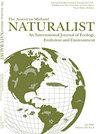Common Nighthawk (Chordeiles minor) Occurrence in Urban Areas Southeastern Wisconsin, U.S.A.
IF 0.6
4区 环境科学与生态学
Q4 Agricultural and Biological Sciences
引用次数: 3
Abstract
Abstract. Limited survey data and numerous anecdotal accounts indicate the Common Nighthawk (Chordeiles minor) is experiencing population declines not only in Wisconsin, U.S.A., but across large parts of their range in North America. However, it is possible estimates from current avian monitoring efforts are not representative, because surveys are not necessarily conducted at dusk when C. minor are most active, nor do they specifically target urban areas where a portion of the C. minor population are known to nest on flat graveled rooftops. Therefore, urban crepuscular monitoring protocols are needed to address these issues, enhance current monitoring efforts, and gain a better understanding of C. minor demographics. In this study we used a citizen science-based methodology to survey 92 municipalities in southeastern Wisconsin in areas with varying degrees of urbanization to establish baseline data for this species that can then be compared to future counts. We investigated the influence of a range of environmental and ecological factors, as well as landscape features and land cover types in relation to C. minor occurrence. C. minor detection was positively correlated with Chimney Swift (Chaetura pelagica) counts, the number and area (m2) of flat graveled rooftops, and heavily developed land cover types. The surveys also revealed a negative correlation between agricultural land cover and C. minor occurrence. Overall, the use of citizen science to establish a baseline for C. minor was successful and may be adapted and applied to other crepuscular bird species at a broader geographic scale of similar landscape type.美国威斯康星州东南部城市地区常见夜鹰(小夜鹰)。
摘要有限的调查数据和大量的轶事报道表明,普通夜鹰(Chordeiles minor)的数量正在下降,不仅在美国威斯康星州,而且在北美的大部分地区都是如此。然而,目前鸟类监测工作的估计可能不具有代表性,因为调查不一定是在黄昏时进行的,而黄昏时是小绒螟最活跃的时候,调查也不是专门针对城市地区进行的,因为已知城市地区有一部分小绒螟在平坦的砾石屋顶上筑巢。因此,需要制定城市黄昏监测方案来解决这些问题,加强当前的监测工作,并更好地了解C. minor的人口统计数据。在这项研究中,我们使用了一种基于公民科学的方法,对威斯康星州东南部城市化程度不同的地区的92个城市进行了调查,以建立该物种的基线数据,然后可以与未来的数量进行比较。研究了一系列环境生态因子、景观特征和土地覆被类型对小蠹发生的影响。小叶蛾检出率与烟囱雨蛾(Chaetura pelagica)数量、平坦砾石屋顶数量和面积(m2)、高度发达的土地覆盖类型呈正相关。调查还显示,农业土地覆被与小蠹的发生呈负相关。总体而言,利用公民科学方法建立小红雀基线是成功的,可以在类似景观类型的更大地理尺度上适用于其他黄昏鸟类。
本文章由计算机程序翻译,如有差异,请以英文原文为准。
求助全文
约1分钟内获得全文
求助全文
来源期刊

American Midland Naturalist
环境科学-生态学
CiteScore
1.20
自引率
0.00%
发文量
38
审稿时长
18-36 weeks
期刊介绍:
The American Midland Naturalist has been published for 90 years by the University of Notre Dame. The connotations of Midland and Naturalist have broadened and its geographic coverage now includes North America with occasional articles from other continents. The old image of naturalist has changed and the journal publishes what Charles Elton aptly termed "scientific natural history" including field and experimental biology. Its significance and breadth of coverage are evident in that the American Midland Naturalist is among the most frequently cited journals in publications on ecology, mammalogy, herpetology, ornithology, ichthyology, parasitology, aquatic and invertebrate biology and other biological disciplines.
 求助内容:
求助内容: 应助结果提醒方式:
应助结果提醒方式:


